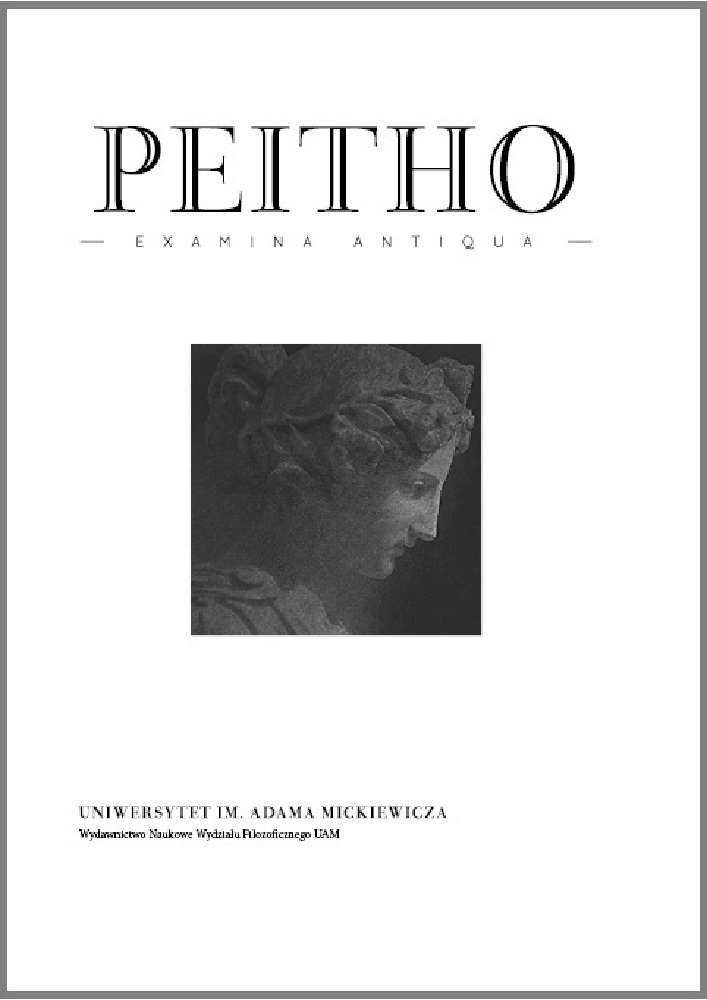Abstract
Plato tries to explain the becoming of the cosmos by referring to the concepts of order and disorder. Scholars have usually focused on the relationship between the cosmos and the demiurge that Plato puts forward to explain the reasonable (i.e., well-ordered) development. Along these lines, scholarship has examined the providential role played by both the demiurge and the soul of the world. Yet, an interesting problem still remains open: what exactly is the function of disorder? What is the sense of the concept of a perfectly established order if we do not know the manner in which it is achieved, since we have no understanding of the conditions that make it possible? Pursuing this line of thought, one may point to a providential role of the disorder given the balance of forces that operates in Plato’s cosmic becoming.
References
Allen, R., 1965, Studies in Plato’s Metaphysics, London.
Altman, W. H. F., 2016, The Guardians in Action. Plato the Teacher and the Post-Republic Dialogues from Timae¬us to Theaetetus, Lanham – Boulder – New York – London.
Anton, J., Kustas, G. (eds.), 1971, Essays in Ancient Greek Philosophy, Albany.
Brisson, L.,19942, Le même et l’autre dans la structure ontologique du ‘Timée’ de Platon, Sankt Augustin (the first edition: Paris 1974).
Broadie, S., 2012, Nature and Divinity in Plato’s Timaeus, Cambridge.
Burnet, I. (rec.), 1902, Platonis opera, vol. IV, Oxford.
Calvo, T., Brisson, L. (eds.), 1997, Interpreting the Timaeus-Critias: Proceedings of the IV Symposium Platon¬icum: Selected Papers, Sankt Augustin.
Charles, S. R., 2006, The Emergent Metaphysics in Plato’s Theory of Disorder, Lanham –Boulder – New York – Toronto – Oxford.
Cherniss, H., (1957), “The Relation of the Timaeus to Plato’s Later Dialogues”, American Journal of Philology 78, pp. 225–266 (the first edition: Allen 1965, pp. 339–378).
Chiaradonna, R., (2014), “Plotinus’ Metaphorical Reading of the Timaeus: Soul, Mathematics, Providence”, in: D’Hoine – Van Riel 2014, pp. 187–210.
Cornford, F. M., (1966), Plato’s Cosmology: the Timaeus of Plato. Translated with a running commentary, London (the first edition: 1937).
D’Hoine, P., Van Riel, G. (eds.), 2014, Fate, Providence and Moral Responsibility in Ancient, Medieval and Early Modern Thought. Studies in Honour of Carlos Steel, Leuven.
Dixsaut, M., 2018, Platon. Le Politique, Intod., trad., et commentaire par M. Dixsaut et A.A., Paris.
Ferrari, F., 2003, “Causa paradigmatica e causa efficiente: il ruolo delle idee nel Timeo”, in: Natali – Maso 2003, pp. 83–94.
Ferrari, G. R. F. (ed.), 2000, in: Plato. The Republic., G. R. F. Ferrari (ed.), T. Griffith (transl.), Cambridge.
Frede, M., 1988, “Being and Becoming in Plato”, Oxford Studies in Ancient Philosophy (suppl. vol.), pp. 37– 52.
Fronterotta, F., 2001, ΜΕΘΕΞΙΣ. La teoria platonica delle idee e la partecipazione delle cose empiriche. Dai dialoghi giovanili al ‘Parmenide’, Pisa.
Gotthelf, A. (ed.), 1985, Aristotle on Nature and Living Things: Philosophical and Historical Studies presented to D. M. Balme on his Seventieth Birthday, Pittsburgh – Bristol.
Gregory, A., 2000, Plato’s Philosophy of Science, London.
Gregory, A., 2008, Introduction, in: Plato, ‘Timaeus’ and ‘Critias’, R. Waterfield (transl.), Oxford, pp. iv–xliv.
Johansen, T. K., 2003, “The Place of the Demiurge in Plato’s Teleology”, in: Natali – Maso 2003, pp. 65–82.
Lisi, F., 1997, “La construcción del alma del mundo en el Timeo (35a–b) y la tradición indirecta”, in: Calvo – Brisson 1997, pp. 251–259.
Maso, S., 2003, “Dal disordine all’ordine”, in: Natali – Maso 2003, pp. 243–257.
Migliori, M., 2013, Il disordine ordinato: la filosofia dialettica di Platone, Brescia.
Mohr, R. D., 1985, The Platonic Cosmology, Leiden.
Moreau, J., 1981, L’Âme du monde de Platon aux Stoïciens, Hildesheim – New York (the first edition: Paris: 1939).
Natali, C., Maso, S. (eds.), 2003, Plato Physicus. Cosmologia e antropologia nel ‘Timeo’, Amsterdam (ripr. Vene¬zia 2011).
Owen, G. E. L., 1965, “The Place of the Timaeus in Plato’s Dialogues”, in: Allen 1965, pp. 313–338 (the first edition: The Classical Quarterly 47 (1953), pp. 79–95).
Parry, R. D., 1991, “The intelligible world-animal in Plato’s Timaeus”, Journal of the History of Philosophy 29, pp. 13–32.
Phillips, J., 2007, Order from Disorder. Proclus’ Doctrine of Evil and its Roots in Ancient Platonism, Leiden – Boston.
Reydams-Schils, G., 1999, Demiurge and Providence. Stoic and Platonist Readings of Plato’s ‘Timaeus’, Turnhout.
Rivaud, A., 1925, Platon, Oeuvres complètes, t. X: Timée et Critias, Paris.
Serrano Cantarín, R., Díaz De Cerio Díez, M. (eds.), 2012, in : Platón. Timeo, R. Serrano Cantarin, M. Diaz De Cerio Diez, Madrid.
Skemp, J. B., 1967, The Theory of Motion in Plato’s Later Dialogues, Amsterdam (the first edition: Cambridge 1942).
Skemp, J. B., 1985, “The Disorderly Motions Again”, in: Gotthelf 1985, pp. 289–299.
Tarán, L., 1971, The Creation Myth in Plato’s Timaeus, in: Anton – Kustas 1971, I, pp. 372–407.
Taylor, A. E., 1928, A Commentary on Plato’s Timaeus, Oxford.
Trabattoni, F., 2009, Platone, Roma.
Vlastos, G., 1965, “The Disorderly Motion in the Timaeus”, in: Allen 1965, pp. 379–399 (the first edition: The Classical Quarterly 33 (1939), pp. 71–83).
Voegelin, E., 1957, Order and History. Plato and Aristotle, Baton Rouge – London (repr. 1990).
Waterfield, R. (ed.), 2008, in: Plato. ‘Timaeus’ and ‘Critias’, R. Waterfield (transl.), A. Gregory (intr., notes), Oxford.
Wright, M. R. (ed.), 2000, Reason and Necessity: Essays on Plato’s Timaeus, London.
Zedda, S., 2000, “How to build a world soul: a practical guide”, in Wright 2000, pp. 23–41.
License
Peitho provides immediate open access to its content on the principle that making research freely available to the public supports a greater global exchange of knowledge.
